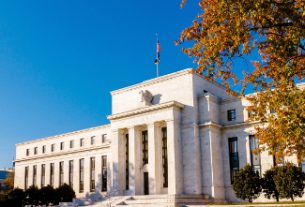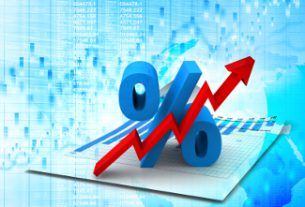To younger workers the idea of a pension hearkens back to days gone by, when employees spent their entire career with a single company from first hire to retirement. In the modern workplace, with workers ready to jump from company to company in search of better pay or benefits, the idea of a pension seems almost antiquated. And with the development of 401(k) programs that have allowed workers to save up for their own retirement, many may not feel that pensions are even necessary.
Yet pensions still exist, particularly for those in government service. Private sector employers still retain significant numbers of employees who entered the workforce under pension systems too. While the number of defined benefit pension plans has dropped by more than half since the mid-1970s, the number of workers covered under those plans has remained roughly the same since then. But an increasing number of those workers may not be able to continue counting on those pensions in the future.
An increasing number of pension plans are beginning to cut benefits in order to save money. Many pension funds developed overly optimistic views of market performance, assuming stock market growth of 7-8% annually in line with long-term growth averages. But thanks to the dotcom bubble and the housing crisis, stock markets have only averaged about 5% annualized growth over the past 20 years, leading to pension funds being underfunded by billions, if not trillions, of dollars.
Workers who may have spent 30 or 40 years with a company all of a sudden are finding themselves in or nearing retirement with their retirement plans swept out from underneath them. They’re finding out the hard way that what they thought was a sure thing is anything but.
Pension Funds as a Reflection of Corporate America
In many ways pension funds are merely mirroring developments in corporate America. Companies that were once industry titans and thought that they could afford lavish pension plans now face competition from more aggressive companies overseas. Pension funds are now a legacy burden that keeps these companies from being able to compete in the global market.
General Electric is a prime example of that, a once-great enterprise that now is actively looking to become a shadow of its former self. It has already divested itself of core business units, and is now looking to its pension plan in order to cut costs further.
GE has frozen its pension plan for 20,000 US workers, keeping them from accruing more pension benefits after 2021. And for 100,000 employees who haven’t yet received their pensions benefits, GE is offering them a lump sum to buy them out, hoping that they’ll take the money up front. Those two moves together are expected to benefit GE by $6-8 billion.
Those workers who don’t take the buyout have to hope that GE will still be around in 10-20 years to pay out its pensions. The company is in horrible financial shape, and employees would be taking a real risks in assuming that the company will remain in business and solvent long enough that they’ll be able to receive their pensions.
Numerous companies over the past several years have defaulted on their pension plans and turned them over to the government-run Pension Benefit Guarantee Corporation (PBGC). The PBGC currently administers over 23,000 pension plans covering over 40 million workers. GE employees have to hope that they don’t end up among them, especially as PBGC’s financial position may become more precarious in the near future.
Government Pensions Not in Any Better Shape
While pensions have largely gone by the wayside in the private sector, they remain an important part of benefit packages for government workers. Pensions for some employees, particularly those in police and fire service, can be incredibly lavish. And like many aspects of government operations, governments have been free with the benefits with no plan for how to pay for them.
In many areas of the country state and local governments are now increasingly burdened by pension payments. Their pension plans too were overly optimistic about growth rates and now find themselves severely underfunded. And in many cases that could cause municipalities and possibly even state governments to declare bankruptcy.
Those nearing retirement age need to be aware of these issues facing pension plans, and be aware that the odds of them receiving 100% of their promised benefits will be highly unlikely. It will be incumbent upon them to have at least some sort of backstop of their own to ensure that they will have enough money in retirement.
Some workers may have the luxury of both a pension plan and a 401(k) plan, although that’s highly uncommon. More likely, employees would have to set up an IRA of their own. Even that could go a long way towards securing their financial future.
Workers over age 50 can currently put up to $7,000 a year into an IRA. Even assuming a very conservative 4% annualized growth rate, that’s over $145,000 that can be saved by age 65. While that’s less than ideal for a fully-funded retirement, it’s a tidy sum to supplement other retirement income, such as any pension benefits or Social Security income that you may receive.
By investing their money in a gold IRA, investors can enjoy the same tax advantages as normal IRA plans while gaining the stability of investing in gold. Gold has been the second-best performing asset of the past 20 years, far outpacing stocks. And it offers retirees the knowledge that, unlike pensions that can evaporate into thin air, their wealth will still be there working for them in retirement.
This article was originally posted on Goldco.





